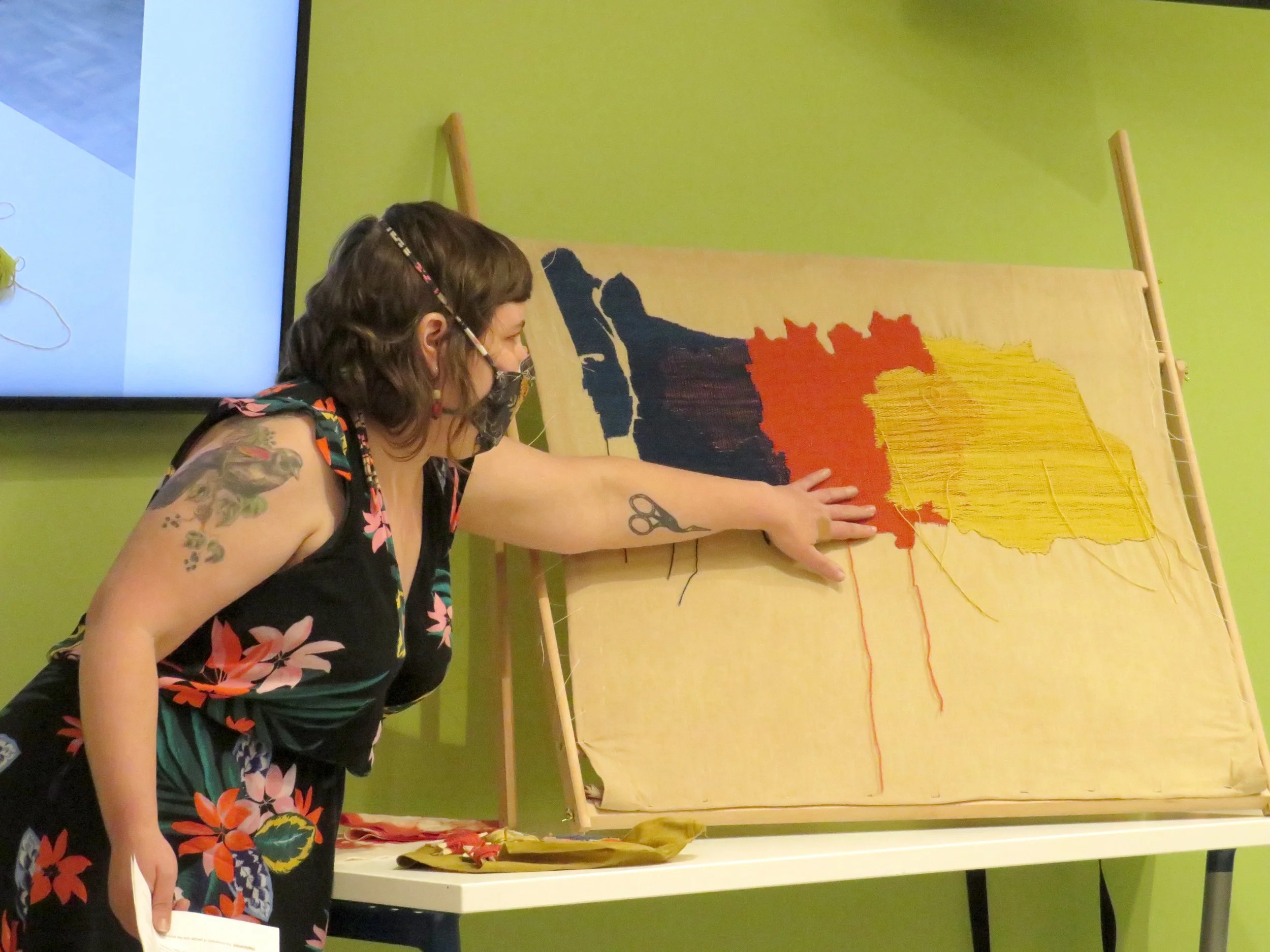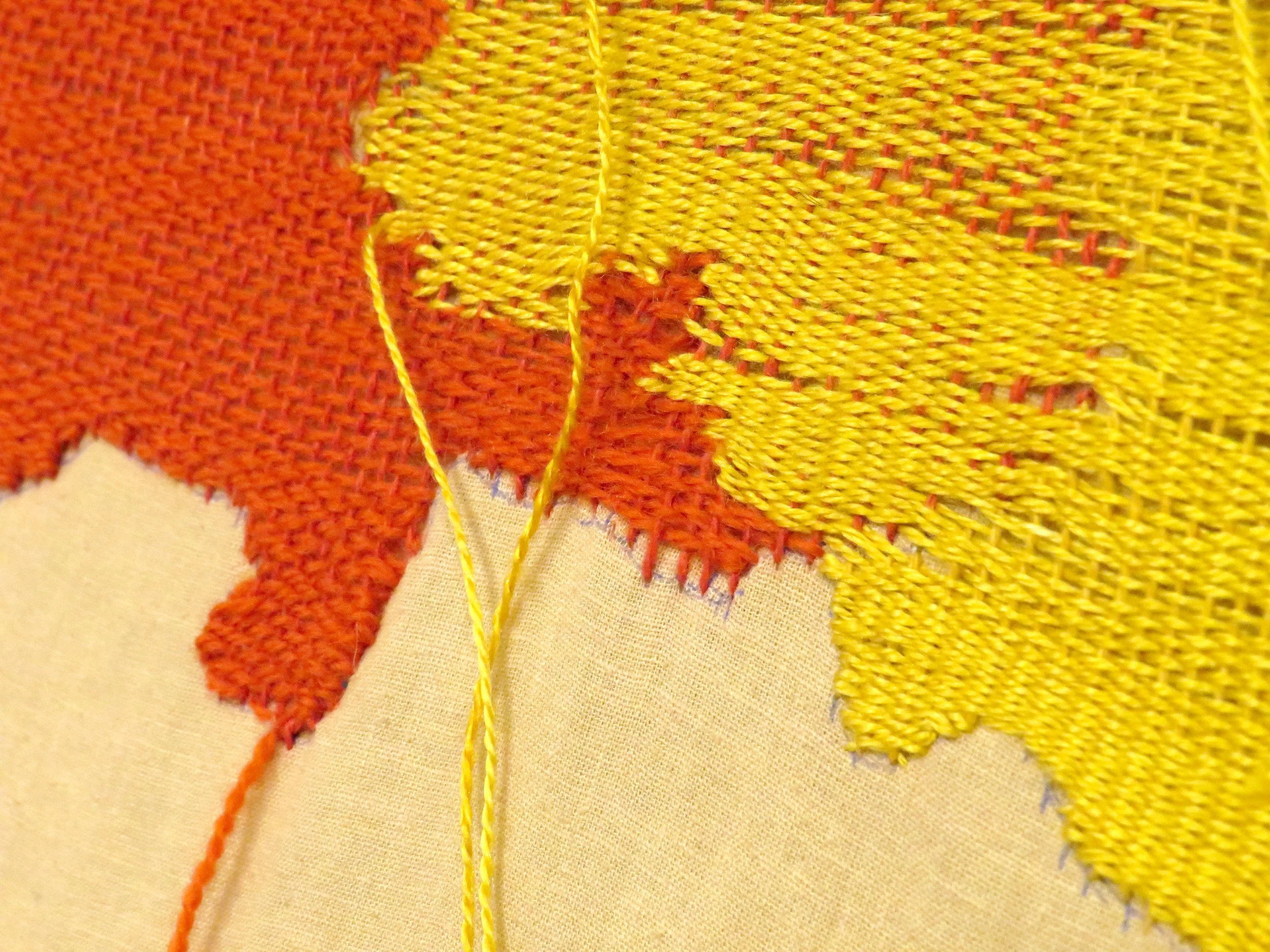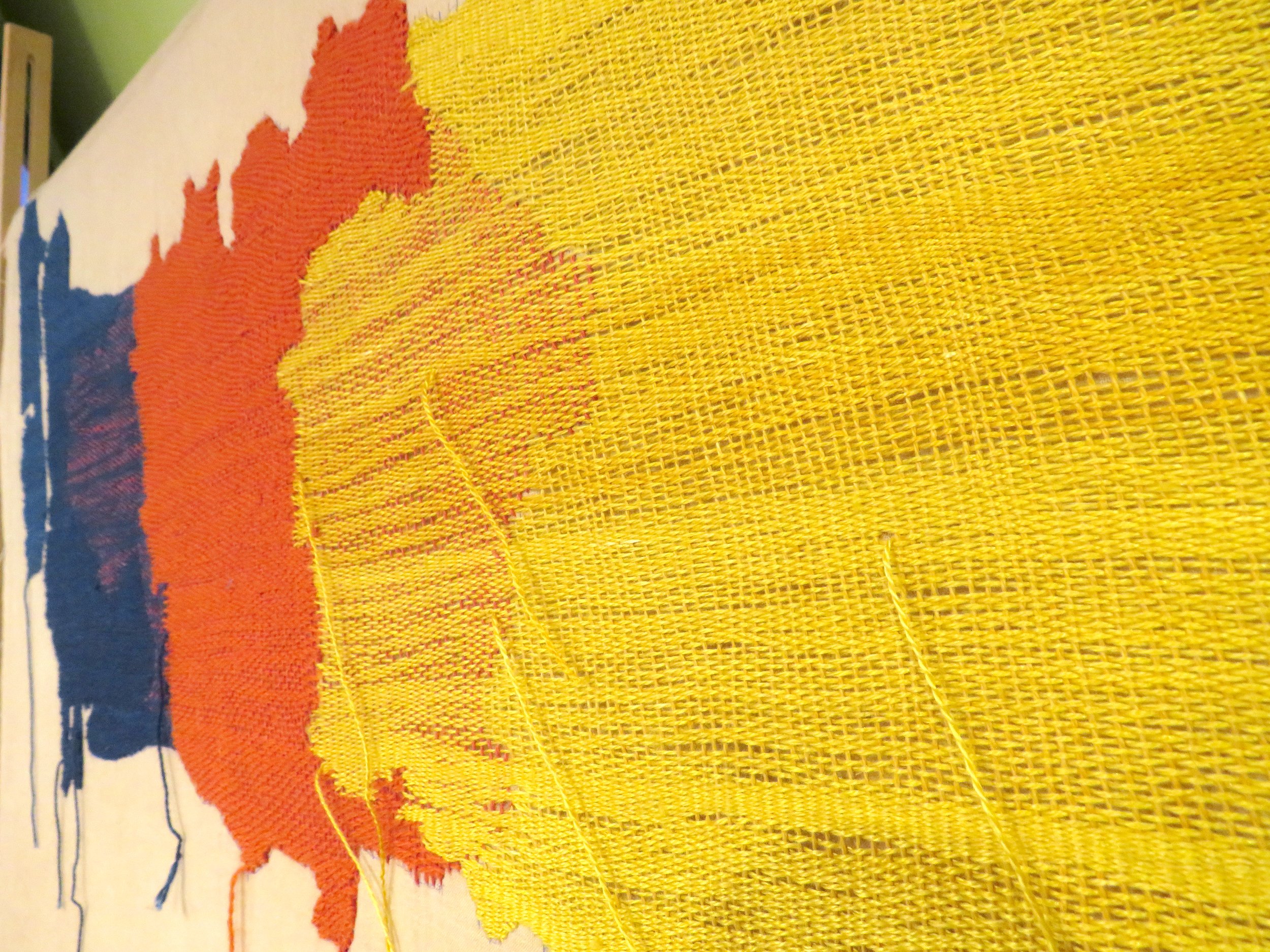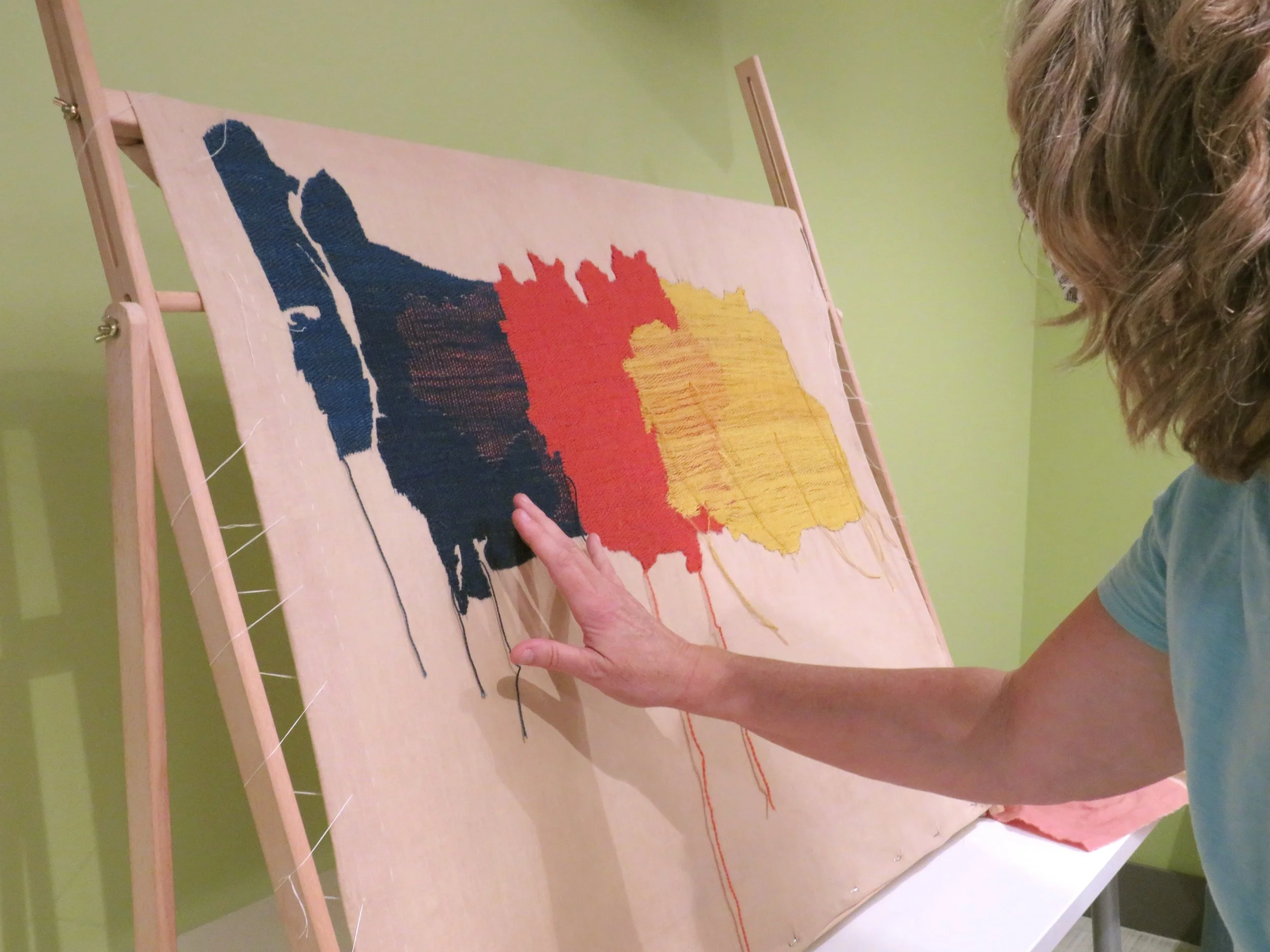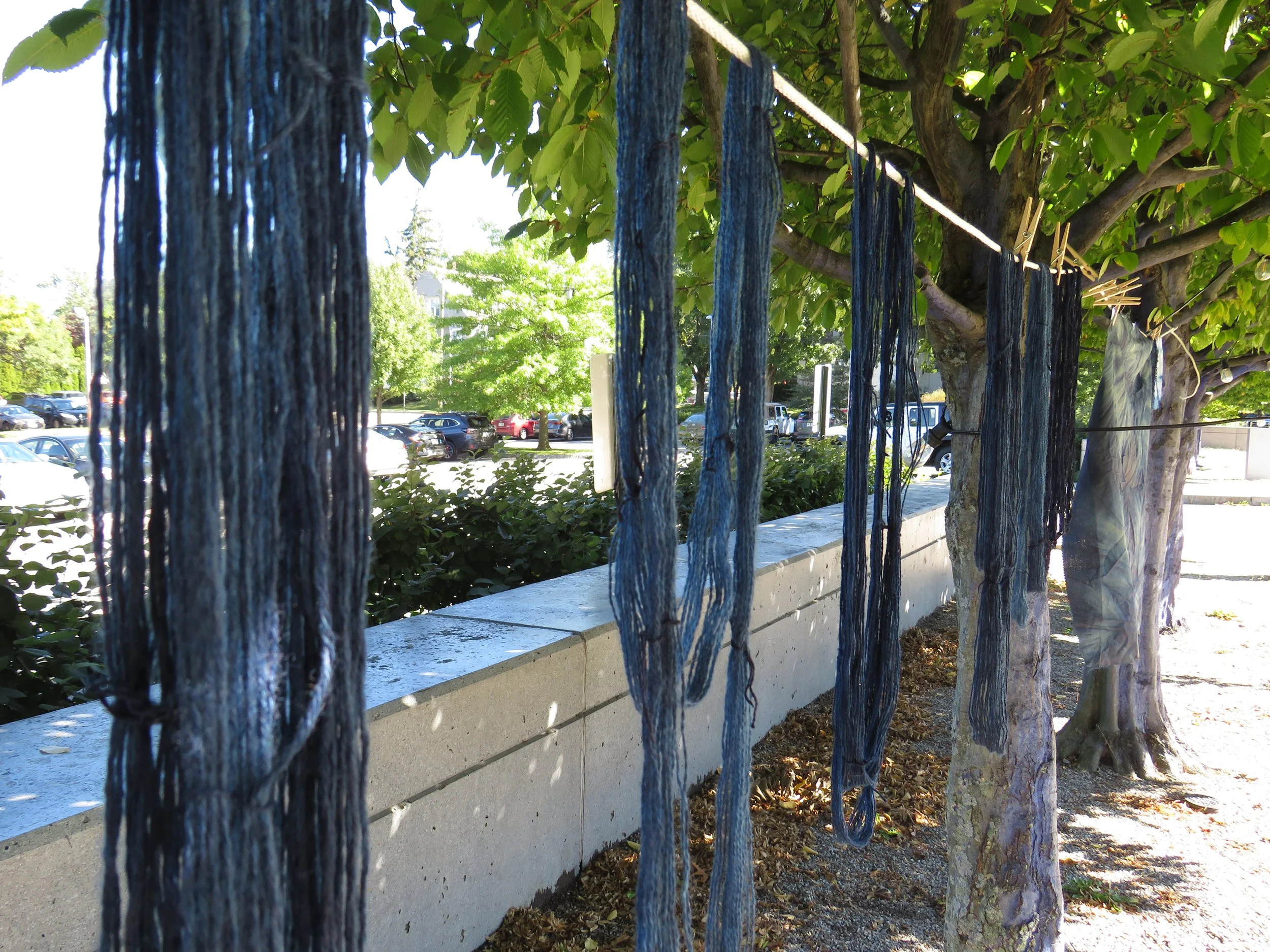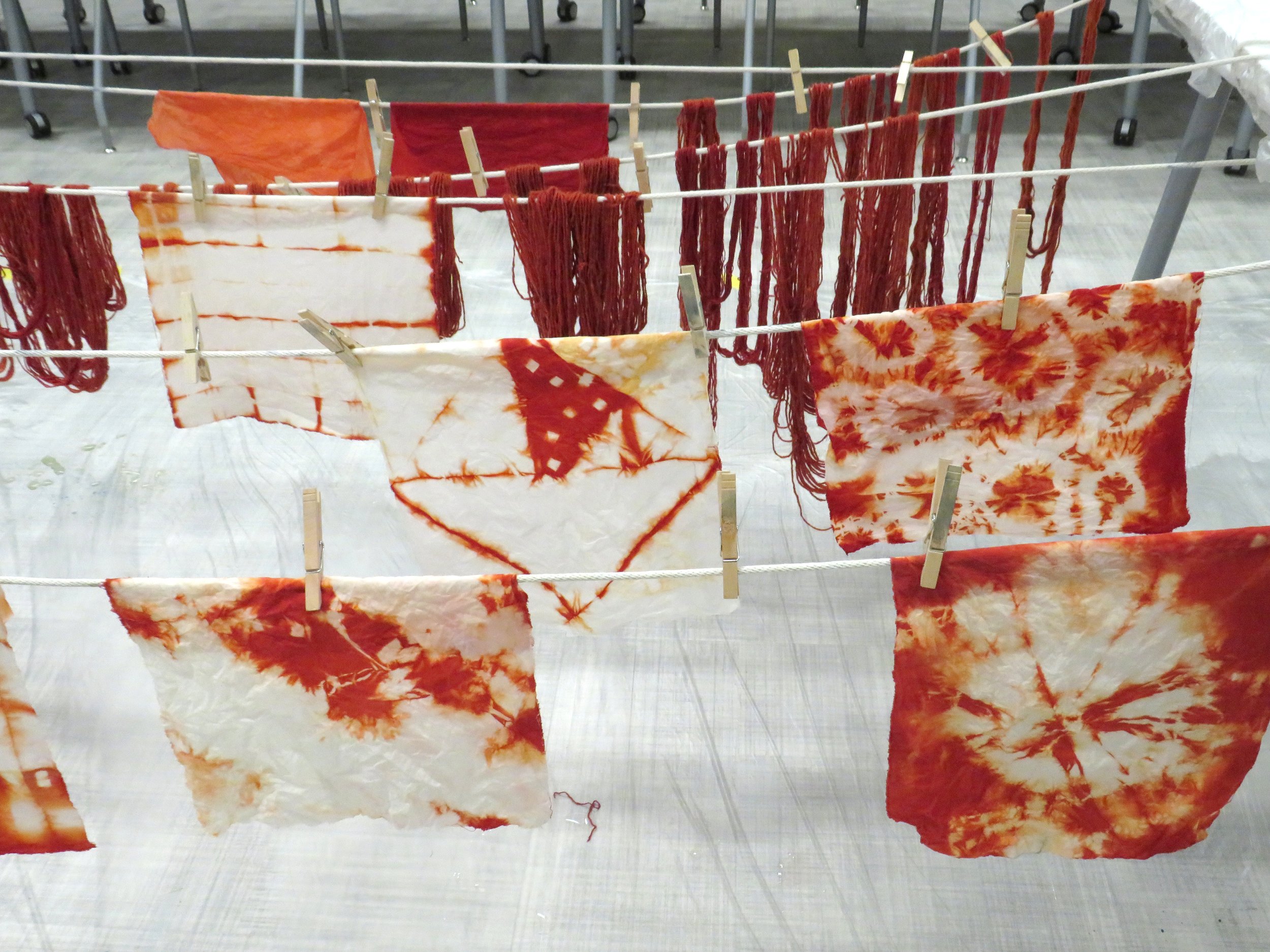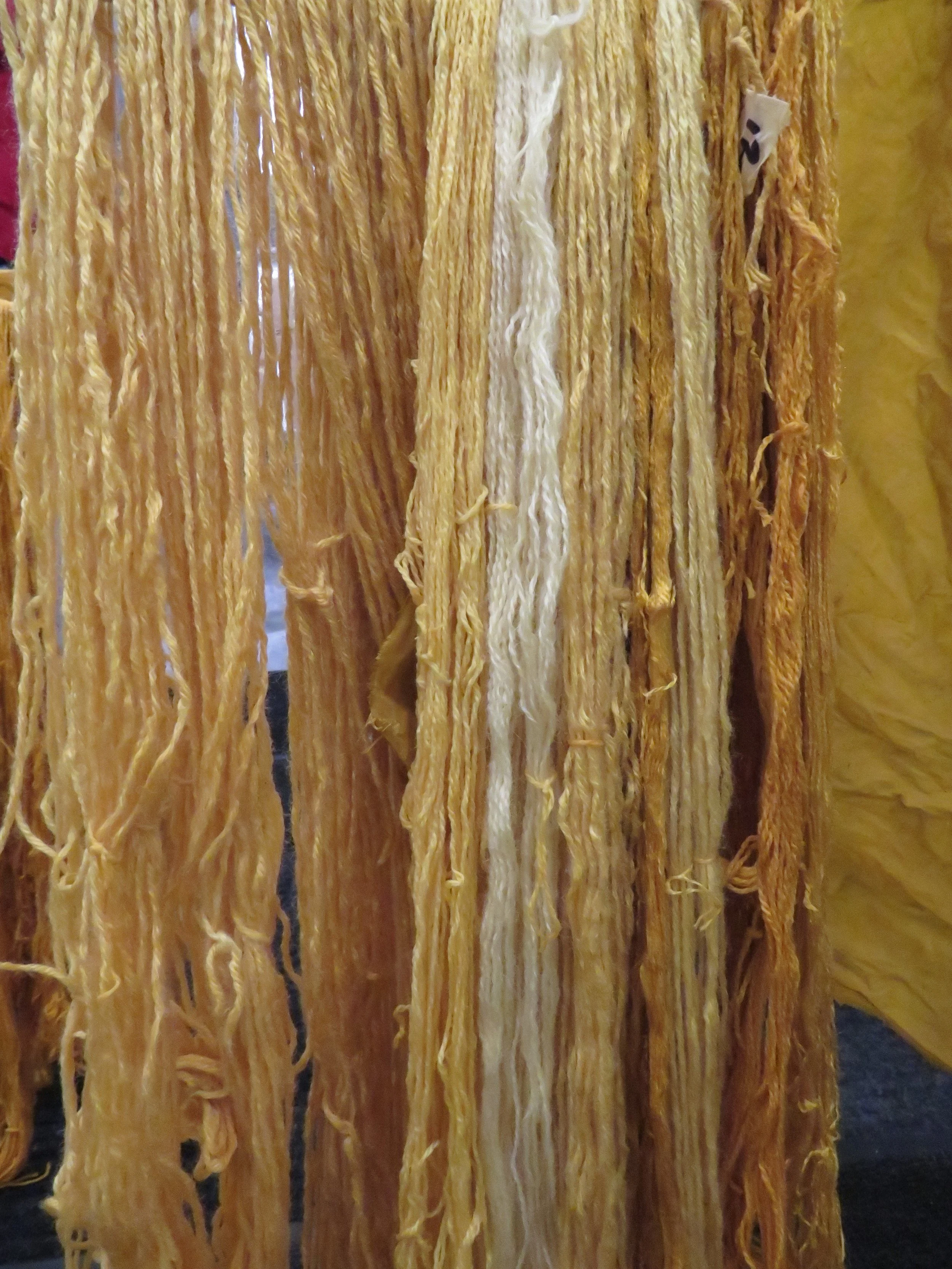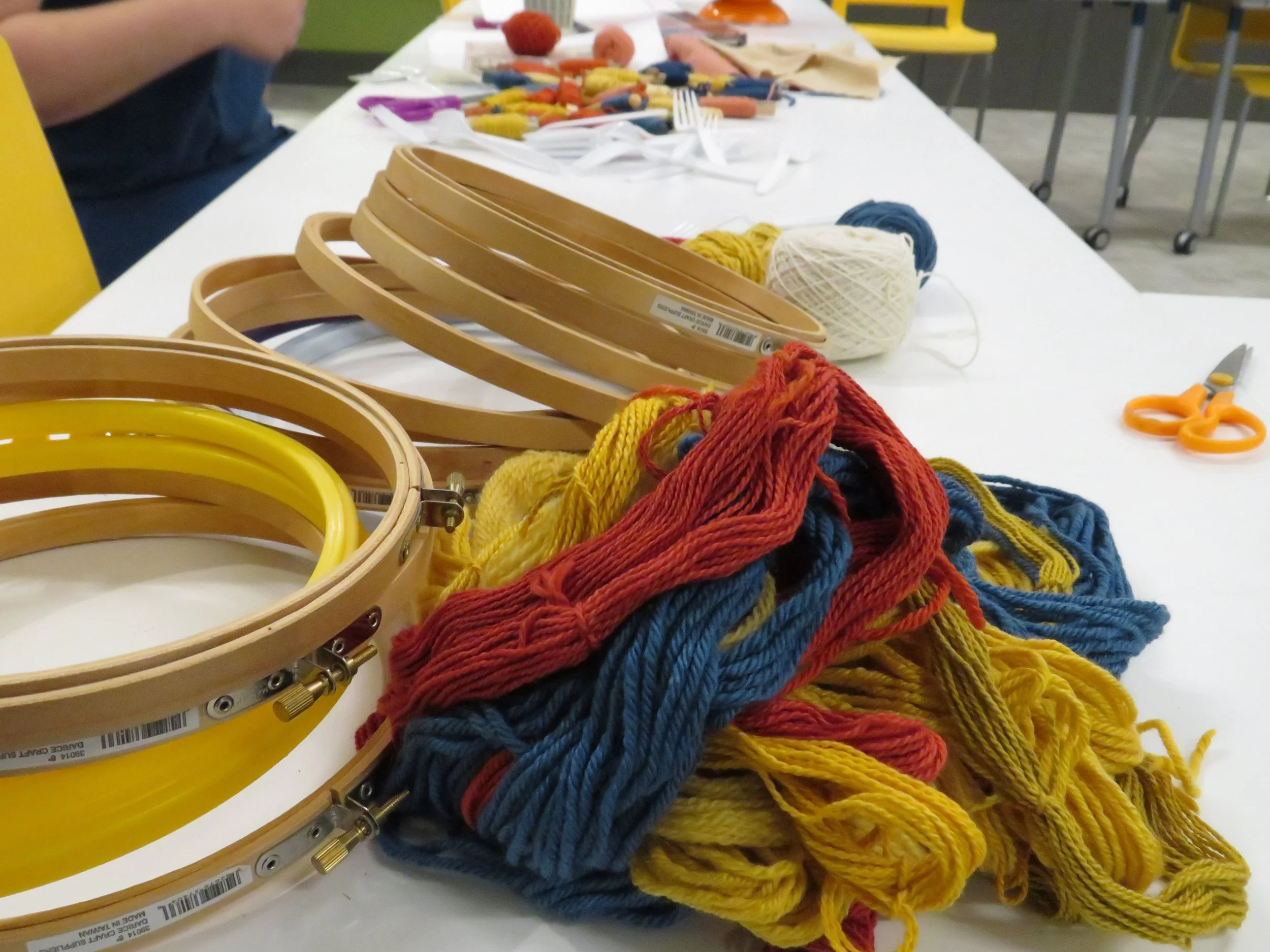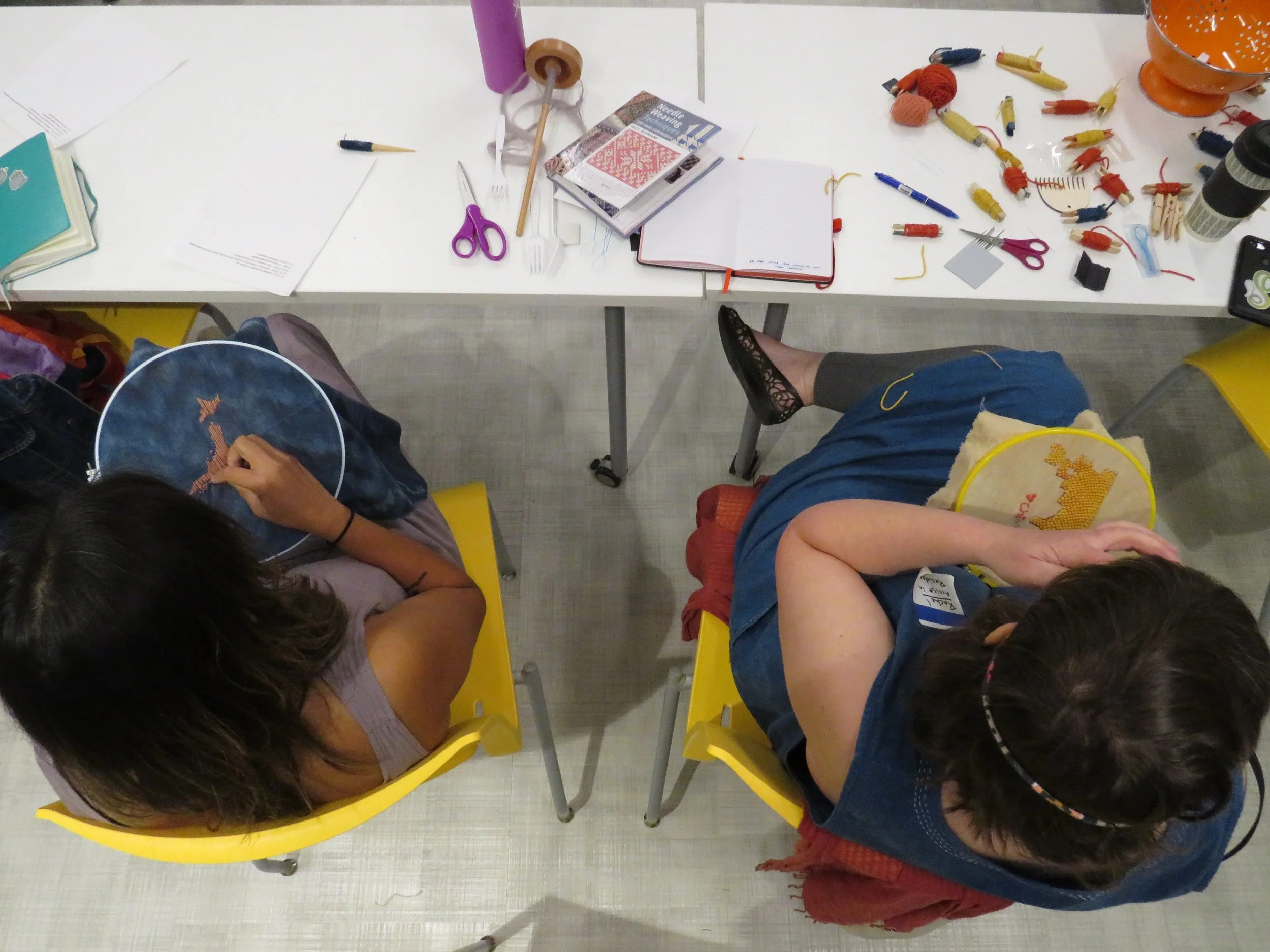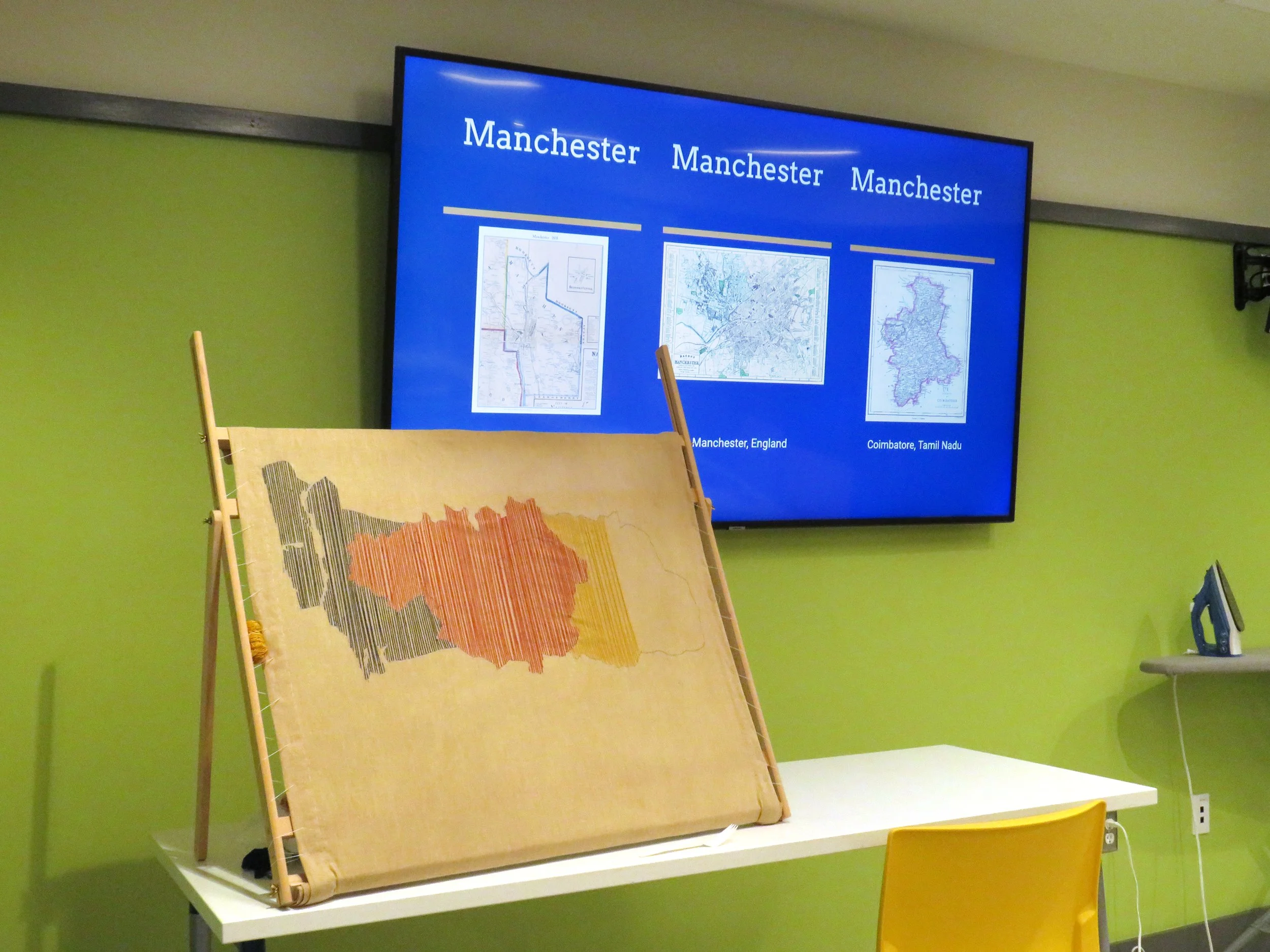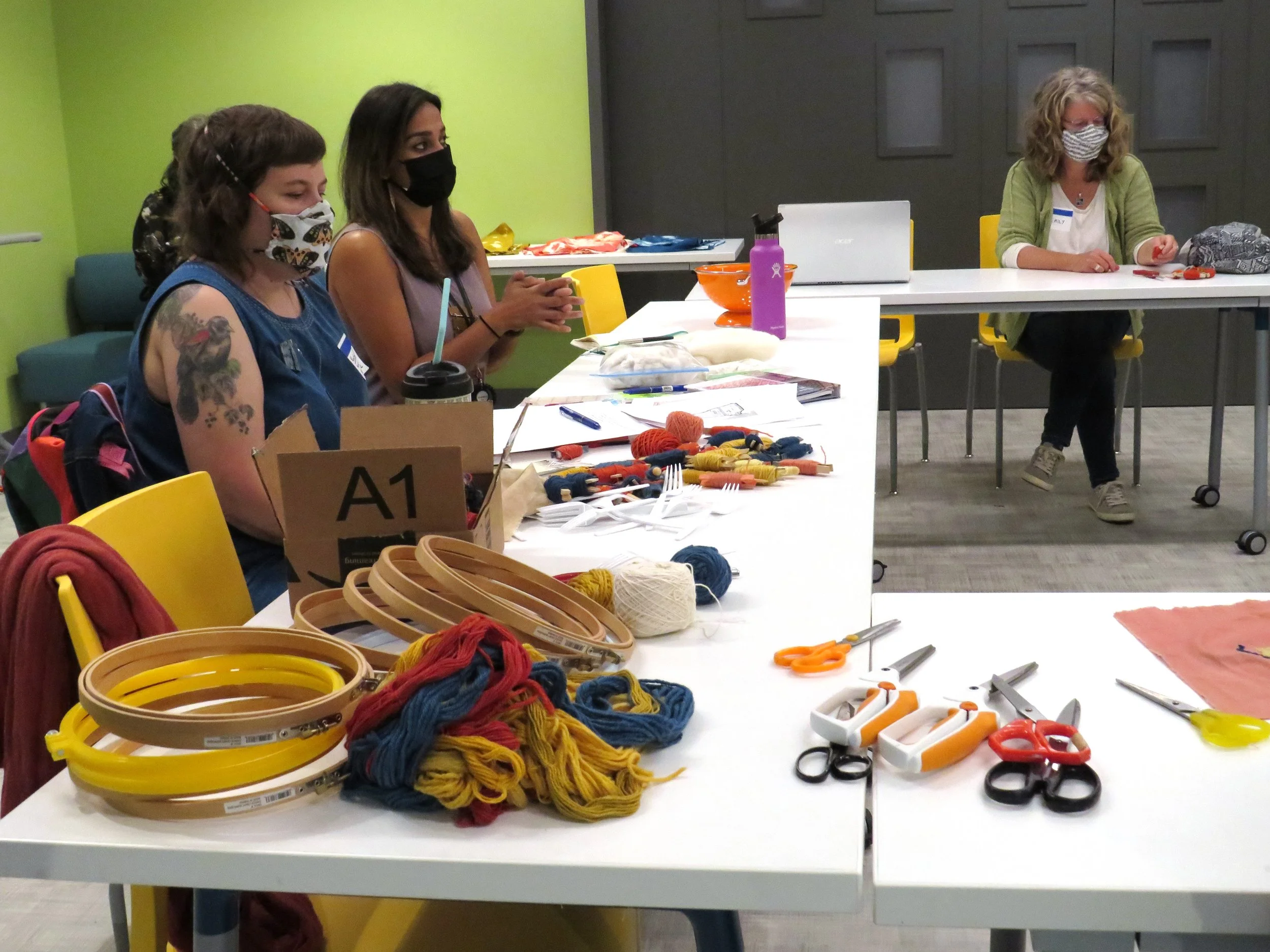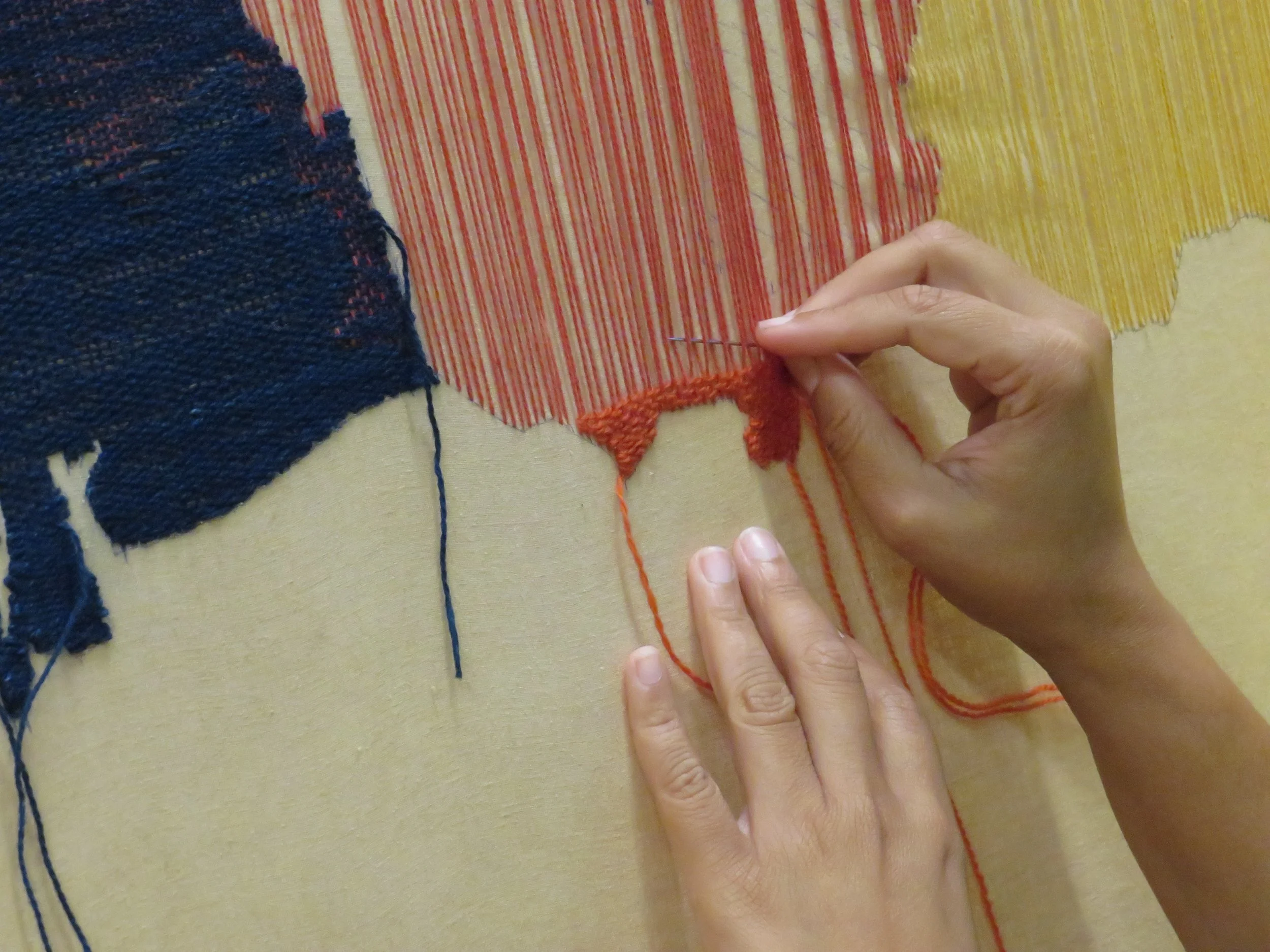
The history of textiles spans the globe, complicated by trade, labor, colonialism, slavery, and industrialization. Manchester, like its namesake in England, was deeply entwined in this complex history - a site of investment and economic growth at one historical moment, and then abandonment and decay in another. It was a beneficiary and also a victim of global systems of trade and exploitation. Across oceans, we can see echoes of these same systems at play in the textile cities of India, like Coimbatore, Salty Brown Femme’s home town, sometimes referred to as the Manchester of South India.
In this collaborative textile project, artist Rachel Wallis and Salty Brown Femme explored the intertwined histories of three cities in the US, England, and India, how their histories were shaped by economic and political systems driven by the textile industry, and what is left to blossom in the post-colonial identities and landscapes when those systems move on. Using cotton, wool, and silk, as well as dyes native to those three locations, we will invite community members to create a tapestry that speaks to that shared history. As they dyed and wove, they facilitated conversations with community participants from Manchester, NH, about where fabric comes from, who produces it, what it means for a place to base their economy on textiles? They asked questions about shared and overlapping spatio-temporal geographic identities, how power shapes culture, history, place, economy and political systems, and ultimately how textiles can help us understand the three different Manchesters.
This project was made possible by the Currier Museum of Art’s Artist in Residence (AiR) program. Images of artwork and events are from a month long artist residency at the Currier Museum of Art, Manchester, NH in October 2021. Photos courtesy: Currier Museum of Art.
